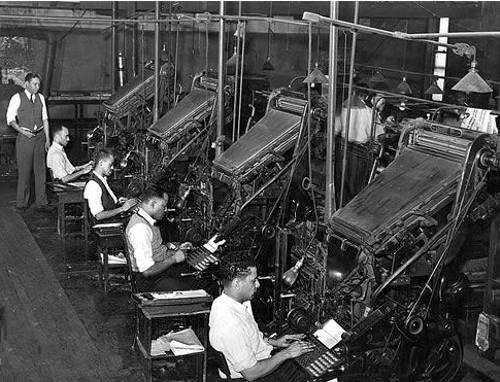Many thanks to Stan Coutant for allowing these photographs to be used on Metal Type. Stan was an Intertype Operator from 1959 to 1978 – a period he describes as “one of the most enjoyable and rewarding jobs I have ever had.”
In Stan’s own words: “In 1966 I had occasion to travel to New York, my first and only trip to the East Coast. Since there was adequate time before I departed, I wrote to the folks at Intertype Corporation and asked about taking a tour of the factory.









